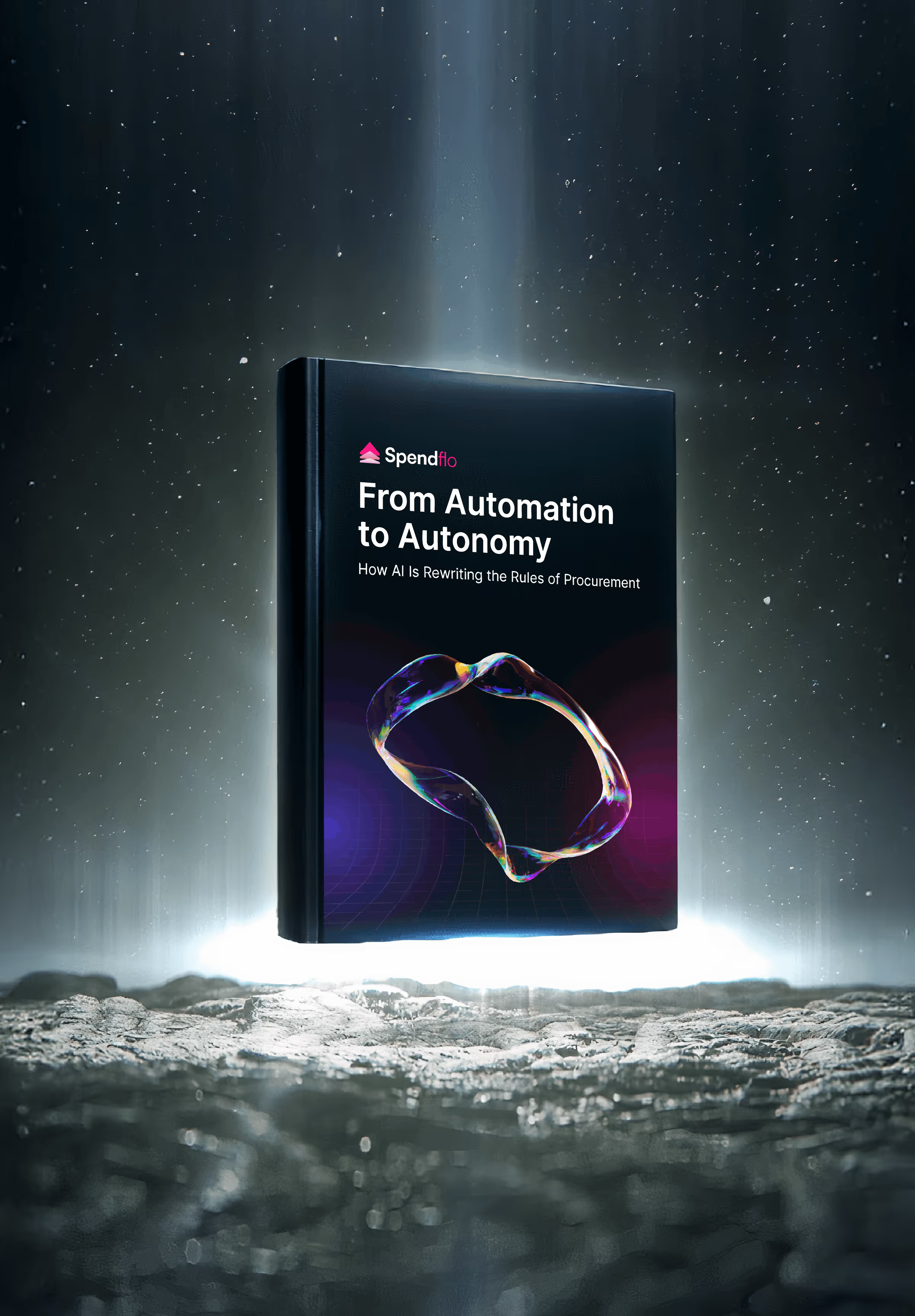

What is Category Management? A Comprehensive Guide (+Components)

What is Category Management? A Comprehensive Guide (+Components)
Master category management with our comprehensive guide. Understand key concepts, implementation steps, and how to drive results.


“Procurement leaders who apply structured category management practices can cut costs by up to 15% while improving supplier performance and innovation.” – Gartner, 2024
Despite these proven gains, many organizations still struggle with fragmented spend data, siloed purchasing, and short-term sourcing cycles. As businesses face growing pressure to optimize budgets and build resilient supply chains, category management has become more than a procurement tactic, it’s a strategic framework for long-term value creation.
What is Category Management?
Category management is a procurement strategy that groups similar goods or services into categories like IT or marketing. Each category is managed strategically to improve efficiency, reduce costs, strengthen supplier relationships, and align spending with business goals.
Why Category Management is Important
Category management is crucial because it allows organizations to strategically manage their spend, reduce costs, mitigate supply chain risks, and helps you build strong relationships.
Here are some key benefits:
1. Saves time and money
One of the primary benefits of category management is the potential for significant cost savings. By leveraging economies of scale, negotiating better terms and conditions with suppliers, and identifying opportunities for process improvements, organizations can reduce their overall spend and improve their bottom line.
Category managers can use data and analytics to identify areas of overspending, consolidate suppliers, and negotiate more favorable contracts. For example, a company might identify that it is purchasing the same product from multiple suppliers at different prices and then consolidate its spend with a single supplier to secure better pricing.
Over time, these cost savings can add up to a significant amount and help the organization remain competitive in the marketplace.
2. Saves from Risks
Another important benefit of category management is the ability to mitigate risk. This might include diversifying the supplier base to reduce dependence on a single supplier, implementing quality control measures to ensure consistent product quality, or developing contingency plans to address potential supply chain disruptions. By managing risk effectively, organizations can avoid costly disruptions to their operations and protect their reputation in the marketplace. It also supports broader risk management frameworks by proactively identifying potential supplier or delivery failures.
3. Improved Supplier Relationships
Category management also helps organizations build stronger, more collaborative relationships with their suppliers. This might involve sharing data and insights, jointly developing new products or services, or collaborating on continuous improvement initiatives. With a culture of collaboration and trust with suppliers, organizations can unlock value that goes beyond cost savings and improve overall supply chain performance.
4. Alignment with Business Objectives
Category management helps ensure that procurement strategies are aligned with the organization's overall business objectives. By taking a holistic view of each category and considering factors such as internal demand, market trends, and business requirements, category managers can develop strategies that support the organization's goals and priorities. For example, if an organization is focused on sustainability, the category manager might prioritize suppliers with strong environmental and social responsibility practices.
Types of Procurement Categories
Procurement categories are groupings of goods or services with similar supply market characteristics or that fulfill a related business function. Segmenting purchases into categories helps organizations streamline sourcing strategies, improve cost-efficiency, and manage supplier relationships more effectively.
Here are the main types of procurement categories commonly used across organizations:
Direct Procurement
Direct procurement involves acquiring goods and services that directly impact the production process. These are core inputs required to manufacture a product or deliver a service. For example, raw materials, components, and subassemblies fall under direct procurement.
In industries like manufacturing, direct procurement is critical to ensuring operational continuity, maintaining quality, and reducing lead times.
Indirect Procurement
Indirect procurement covers goods and services that support the organization’s day-to-day operations but are not part of the final product. This includes office supplies, utilities, travel, IT services, and maintenance.
While indirect spend may not affect the final product directly, poor control over it can lead to unnecessary costs and inefficiencies.
Services Procurement
This category involves hiring third-party vendors to deliver services such as consulting, legal assistance, marketing, or temporary staffing. Since services are intangible and often customized, procurement teams must evaluate supplier capabilities, delivery timelines, and performance metrics more rigorously.
Capex Procurement
Capex (capital expenditure) procurement refers to purchasing long-term assets like machinery, buildings, or large IT infrastructure. These are high-investment purchases and typically involve rigorous vendor evaluation, financial approvals, and long planning cycles.
Segmenting procurement this way helps category managers tailor sourcing strategies to each type’s unique cost structure, supply risks, and stakeholder requirements. A clear categorization also makes it easier to consolidate suppliers, negotiate better contracts, and drive long-term value across the organization.
Using UNSPSC and Internal Taxonomy
To bring structure and consistency to category management, organizations often use the United Nations Standard Products and Services Code (UNSPSC), a globally recognized category grouping standard for classifying products and services.
The UNSPSC code provides a hierarchical framework for organizing spend into logical segments, making it easier to analyze, benchmark, and report procurement data. Each item or service is categorized under a multi-level structure (segment, family, class, commodity), which enhances transparency and comparability across global operations.
Some organizations, however, go a step further and build their own internal spend taxonomy. These internal taxonomies are tailored to specific business objectives, spend patterns, or organizational structures. For instance, a SaaS company may define categories based on IT, finance, or marketing software to align procurement tracking with department-level budgets.
Combining UNSPSC in procurement with internal taxonomies gives teams both global consistency and business-specific flexibility ensuring spend data is organized in a way that supports smarter sourcing decisions and category strategy development.
Category Management vs. Strategic Sourcing: Key Differences
At first glance, category management and strategic sourcing may seem similar, they both aim to control spend and improve procurement efficiency. But their scope, timeline, and business impact differ significantly.
Strategic sourcing in procurement focuses on tactical, short-term savings through vendor negotiations and price optimization. It’s the process of finding the right supplier, at the right price, for the right need usually during a specific purchasing cycle.
Category management, on the other hand, takes a strategic, long-term view. It covers the entire procurement lifecycle from planning and supplier selection to performance management and renewal decisions. The goal isn’t just cost reduction but continuous value creation, risk management, and alignment with business objectives.
Below is a quick comparison to highlight the difference between category management and strategic sourcing:
Common Category Management Challenges and How to Overcome Them
Category management can unlock long-term savings, stronger supplier partnerships, and greater visibility but building a sustainable program isn’t without hurdles. Many organizations struggle to get cross-functional alignment or to scale their strategy beyond point solutions. Recognizing these challenges early helps procurement leaders plan for smoother adoption and lasting success.
Here are the most common challenges and practical ways to overcome them:
1. Resistance to Change
Introducing category management often requires major shifts in how teams plan, buy, and collaborate. Traditional procurement workflows may be deeply ingrained, leading to hesitation or even pushback, from departments used to doing things “their way.”
To navigate this, category managers need strong change management and communication skills. They should clearly articulate the value of category management such as reduced costs, faster purchasing, and improved supplier performance and involve stakeholders early in the process. When employees understand why change is happening and how it benefits them, adoption becomes easier.
2. Lack of Data and Insights
One of the most critical roadblocks is poor data visibility. When spend data is scattered across multiple tools or buried in spreadsheets, procurement teams can’t see the full picture. This makes it difficult to spot duplicate subscriptions, monitor vendor performance, or identify savings opportunities.
To overcome this, organizations should centralize their spend data and invest in analytics and reporting tools. Platforms like Spendflo bring all vendor, contract, and spend information into one dashboard enabling teams to make informed decisions with accurate, real-time data. Establishing strong data governance processes also ensures consistency and trust in the numbers.
3. Limited Resources and Capabilities
Successful category management demands both the right people and the right skill sets. Many procurement teams operate with lean budgets or lack staff trained in strategic sourcing, supplier relationship management, and data analysis.
To address this, leaders should build a clear business case for investment in category management, demonstrating potential savings and ROI to justify headcount and tools. In parallel, they can create training programs and mentorship opportunities to develop internal talent. Over time, this builds a pipeline of skilled category professionals capable of driving long-term value.
4. Supplier Resistance
While category management focuses on collaboration, some suppliers may view it as a threat. They might resist requests for greater transparency, performance tracking, or innovative pricing models. This resistance can slow progress or strain long-standing relationships.
To mitigate this, category managers must approach suppliers as strategic partners, not just vendors. Strong communication, fair evaluation criteria, and win–win negotiation strategies help suppliers see the mutual benefits: predictable demand, stronger partnerships, and innovation opportunities. The goal is to align procurement objectives with supplier success, creating a more resilient and agile supply chain.
5. Lack of Integrated Tools and Systems
Even when the right people and strategies are in place, many organizations rely on fragmented, single-purpose systems. This limits visibility across the procurement lifecycle and makes it hard to measure results.An integrated platform like Spendflo eliminates these silos by connecting intake-to-procure workflows, supplier data, and spend analytics. It automates manual tasks, surfaces actionable insights, and ensures all stakeholders work from the same source of truth, reducing inefficiencies and accelerating decision-making.
Top Benefits of Category Management in 2025
Category management is crucial because it allows organizations to strategically manage their spend, reduce costs, mitigate supply chain risks, and helps you build strong relationships.
Here are some key benefits:
1. Saves time and money
One of the primary benefits of category management is the potential for significant cost savings. By leveraging economies of scale, negotiating better terms and conditions with suppliers, and identifying opportunities for process improvements, organizations can reduce their overall spend and improve their bottom line.
Category managers can use data and analytics to identify areas of overspending, consolidate suppliers, and negotiate more favorable contracts. For example, a company might identify that it is purchasing the same product from multiple suppliers at different prices and then consolidate its spend with a single supplier to secure better pricing.
Over time, these cost savings can add up to a significant amount and help the organization remain competitive in the marketplace.
2. Saves from Risks
Another important benefit of category management is the ability to mitigate risk. This might include diversifying the supplier base to reduce dependence on a single supplier, implementing quality control measures to ensure consistent product quality, or developing contingency plans to address potential supply chain disruptions. By managing risk effectively, organizations can avoid costly disruptions to their operations and protect their reputation in the marketplace. It also supports broader risk management frameworks by proactively identifying potential supplier or delivery failures.
3. Building Strategic Supplier Partnerships Through Category Management
Category management isn’t just about negotiating better prices, it’s about creating strategic supplier partnerships that drive long-term business value. By shifting from transactional vendor management to collaborative relationships, organizations can unlock value beyond cost in sourcing.
Effective supplier collaboration in procurement encourages open communication, shared goals, and mutual accountability. This means suppliers aren’t just service providers, they become innovation partners who contribute to product development, cost optimization, and sustainability initiatives.
Here’s how leading organizations foster these partnerships:
- Co-developing new products: Category managers work closely with suppliers to innovate faster sharing insights, testing new solutions, and shortening time to market.
- Joint cost-reduction initiatives: Instead of one-sided negotiations, teams collaborate to find efficiencies in production, logistics, and operations that benefit both parties.
- Shared sustainability goals: Procurement and suppliers align on ESG metrics, ethical sourcing, and carbon-reduction targets strengthening brand reputation and long-term compliance.
4. Alignment with Business Objectives
Category management helps ensure that procurement strategies are aligned with the organization's overall business objectives. By taking a holistic view of each category and considering factors such as internal demand, market trends, and business requirements, category managers can develop strategies that support the organization's goals and priorities. For example, if an organization is focused on sustainability, the category manager might prioritize suppliers with strong environmental and social responsibility practices.
3 Key Steps in the Category Management Process
Understanding the category management process steps is essential for procurement and finance teams aiming to achieve long-term value, efficiency, and visibility. The process typically unfolds across three key phases that make up the category management lifecycle.
1. Define Category Profiles
The first step in how to implement category management is to create structured, data-backed category profiles.
Teams analyze spend data, supplier risk, and business logic to build a clear taxonomy of categories such as SaaS, IT, Marketing, or HR. This helps identify which areas drive the most spend, where risks exist, and where consolidation or renegotiation can generate quick wins.
With accurate category profiling, organizations gain the visibility needed to prioritize strategic initiatives.
2. Develop Category Strategy
Once categories are defined, the next phase focuses on category strategy development.
Here, category managers set clear goals, like improving cost efficiency, ensuring compliance, or fostering innovation. They assess supplier capabilities, benchmark pricing, and forecast demand based on historical trends and upcoming business needs.
By aligning each category’s strategy with broader business objectives, procurement leaders create a roadmap for long-term savings and supplier performance improvement.
3. Execute and Monitor
The final phase is all about action and continuous improvement.
Teams execute sourcing events, negotiate contracts, and implement supplier management plans. Real-time tracking of KPIs such as cost savings, supplier quality, and compliance enables quick course correction when needed.
Modern platforms like Spendflo automate these monitoring tasks, delivering AI-driven insights that help teams adapt strategies, manage renewals, and sustain results across the entire category management lifecycle.
Best Practices for Effective Category Management
Implementing category management can deliver measurable savings and long-term value but only when done strategically. Many organizations face common challenges such as fragmented data, siloed departments, and a shortage of skilled category leaders. The following category management best practices can help overcome these obstacles and build a scalable, results-driven procurement function.
1. Assign a Dedicated Category Manager
Every strategic spend area like SaaS, marketing, or IT should have a dedicated category manager who owns its performance end-to-end.
The category manager role involves analyzing spend data, assessing supplier performance, and developing strategies that align with financial and business goals. A dedicated category team ensures accountability, faster decision-making, and stronger supplier relationships.
2. Centralize and Standardize Spend Data
One of the biggest challenges in category management is fragmented data across multiple systems. Organizations should centralize procurement and spend data into a single platform to gain complete visibility into vendor performance, pricing trends, and contract renewals. Standardizing workflows for category analysis, supplier segmentation, and performance measurement ensures consistency and scalability across categories.
3. Align Category Strategy with Business Goals
Category strategies must directly support overall business objectives such as improving ROI, ensuring compliance, or enabling innovation. Collaboration between procurement, finance, and operations helps ensure every category strategy contributes to measurable business outcomes. This alignment also helps justify spend and identify new opportunities for optimization.
4. Use Automated Tools for Spend Categorization and Insights
AI and automation make it easier to categorize spend, analyze usage patterns, and uncover savings opportunities. Platforms like Spendflo automate data collection, contract tracking, and vendor analysis, giving category managers real-time insights to make informed decisions. Automation also frees teams from manual tasks, allowing them to focus on strategy rather than administration.
5. Incorporate Third-Party Market Data
To improve accuracy and competitiveness, category managers should incorporate third-party data in procurement, including pricing benchmarks, supplier risk ratings, and market trends. External data helps validate internal assumptions, supports better negotiations, and prevents overspending. When integrated with internal analytics, it strengthens long-term category strategies.
6. Upskill Category Managers
A shortage of skilled category professionals can slow progress. Investing in continuous training, workshops, and access to real-time market intelligence can help procurement professionals develop into strategic category leaders. Empowering them with the right tools and insights enhances their ability to manage suppliers effectively and drive category value.
7. Encourage Cross-Functional Collaboration
Category management thrives on collaboration. Finance, IT, operations, and business units all have unique insights and needs. Involving key stakeholders early in the strategy development process fosters alignment, minimizes resistance, and builds organizational buy-in. A collaborative culture also improves transparency and communication across departments.
8. Conduct Periodic Category Strategy Reviews
Regular category strategy reviews quarterly or annually ensure that strategies remain aligned with business goals and market dynamics. Reviewing performance metrics such as cost savings, supplier quality, and compliance enables teams to identify improvement areas and adjust quickly. Continuous feedback loops keep category management agile and effective.
9. Continuously Monitor and Improve
Category management is an ongoing process. Teams should track KPIs, supplier performance, and market trends to refine strategies in real time. AI-driven dashboards and analytics can highlight risks or inefficiencies early, helping organizations sustain cost control and long-term ROI across the category management lifecycle.
Best Category Management Software Features for 2025
Choosing the right category management software is critical to building a high-performing procurement function. The right platform empowers procurement teams with visibility, automation, and strategic insights across categories - driving better sourcing decisions and stronger supplier performance.
Here are the key features to look for:
Centralized Spend Visibility
Effective category management starts with data. Look for software that consolidates spend data from multiple sources - contracts, invoices, ERP systems - and presents it in real time. A unified dashboard with customizable views helps category managers identify trends, uncover savings opportunities, and monitor category performance with ease.
Supplier Management Tools
Robust supplier management capabilities are essential. The software should offer tools for onboarding, risk assessments, performance tracking, and vendor segmentation. Advanced features like supplier scorecards and risk alerts help you evaluate vendor health and ensure alignment with business goals.
Category Strategy Planning
A good platform should support strategy creation for each category. This includes goal setting, sourcing plans, contract management, and performance benchmarks. Some solutions offer templates and workflows to standardize strategy execution across categories.
Integration Capabilities
Your category management software should integrate seamlessly with existing procurement, finance, and ERP tools. This ensures data accuracy, eliminates silos, and allows for smooth information flow across departments.
Analytics and Reporting
Powerful analytics and customizable reporting are non-negotiable. Whether it’s visualizing category performance, identifying supplier consolidation opportunities, or tracking contract compliance - insights must be accessible and actionable.
User-Friendly Interface
Even feature-rich tools fall short if they’re hard to use. A clean, intuitive interface ensures adoption by procurement teams and stakeholders alike - maximizing the return on your software investment.
The right category management tool enables you to turn data into strategy, streamline collaboration, and unlock long-term value across your procurement function.
How Spendflo Streamlines your Procurement Lifecycle
Managing procurement manually can feel like trying to piece together a puzzle without the picture on the box. Data lives in silos, renewals slip through the cracks, and cost-saving opportunities vanish before you can act. These challenges only grow as teams scale, vendors multiply, and budgets tighten.
Spendflo simplifies this chaos. It brings your entire procurement lifecycle from intake to renewals onto one centralized, AI-driven platform. With real-time analytics, automated workflows, and collaborative tools, you gain complete visibility and control over every dollar spent.
Here’s what that looks like in action:
Case Study: A leading SaaS company saved over $500K annually and cut renewal turnaround time by 60% using Spendflo’s centralized procurement and vendor management solution. Their finance team now runs procurement reviews in minutes, not weeks.
But inefficiencies don’t stop at lost savings. Disconnected tools and manual approvals often lead to compliance risks, inaccurate forecasts, and strained supplier relationships.
That’s where Spendflo stands apart.
It combines AI-powered spend intelligence, automated purchase order creation, and embedded negotiation support to ensure your procurement runs smoothly, securely, and strategically, all while guaranteeing measurable savings.
✅ Centralize purchasing across departments
✅ Automate manual tasks like PO creation and invoice matching
✅ Get real-time spend visibility with custom dashboards
✅ Identify cost-reduction opportunities through spend analysis
✅ Ensure compliance with budgets and vendor contracts
✅ Collaborate with suppliers and internal teams seamlessly
If your team is ready to bring structure, speed, and savings to procurement.Book a free demo today and see how Spendflo can help you control costs, optimize spend, and scale with confidence.
Frequently Asked Questions on Category Management
How does category management benefit Information Technology and digital transformation?
Information Technology is one of the most complex spend areas, making it ideal for category management. It supports technology adoption, streamlines vendor selection, and uses digital automation to reduce manual processes. This ensures IT tools are aligned with business needs while controlling costs.
How does category management help reduce total cost of ownership (TCO)?
Category management looks beyond unit cost to reduce the total cost of ownership. By evaluating lifecycle costs - such as maintenance, service, logistics, and renewals - procurement leaders can make smarter sourcing decisions that deliver long-term savings and operational value.
Why are supplier negotiations and contract negotiations important in category plans?
A strong category plan depends on effective supplier negotiations and contract negotiations. These define pricing, service levels, and risk-sharing. Negotiation strategies tailored to each category improve outcomes and align with long-term business goals.
How does category management support demand management and customer satisfaction?
Category management enhances demand management by aligning sourcing with actual customer demand and usage trends. It also minimizes maverick spend and improves fulfillment, leading to greater customer satisfaction. This is especially valuable in dynamic industries where industry trends shift rapidly.
What are product categories in category management?
In category management, product categories refer to grouped goods or services that share similar functions or sourcing requirements. These groupings enable procurement teams to apply consistent strategies for cost savings, supplier management, and operational efficiency across each category.
What does a category manager do?
A category manager oversees a specific group of products or services within the procurement function such as SaaS, marketing, or IT. Their primary goal is to drive efficiency, reduce costs, and improve supplier performance across their category.
They analyze spend data, evaluate vendor contracts, negotiate terms, and align category goals with the company’s overall business objectives. In mature organizations, the category manager role also includes forecasting demand, monitoring supplier risks, and leading category strategy development throughout the category management lifecycle.
How is category management used in government procurement?
In government procurement, category management helps public-sector agencies buy smarter by grouping similar goods and services into categories. This enables agencies to leverage their collective buying power, standardize processes, and achieve better value for taxpayers.
The approach improves transparency, reduces duplication of effort, and helps departments share supplier performance data. Many governments, such as the U.S. federal government and the UK Cabinet Office, use category management to manage large-scale, high-value contracts more strategically.
What is the role of data in category management?
Data is the foundation of effective category management. Accurate and centralized spend data allows organizations to identify spending patterns, monitor supplier performance, and uncover savings opportunities. Modern procurement platforms like Spendflo use AI-driven analytics to automate spend categorization, surface contract insights, and benchmark supplier pricing. By combining internal spend data with third-party market data, category managers gain real-time visibility that supports better negotiations, risk management, and long-term category strategy improvement.










.png)

.avif)




.png)















